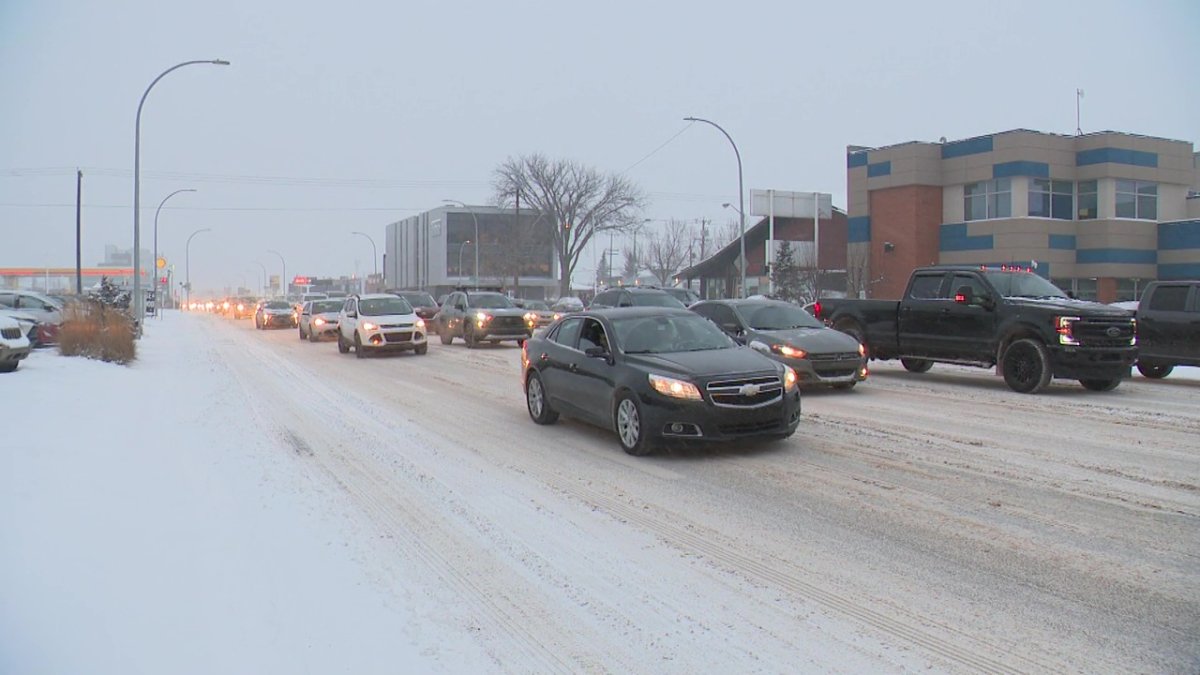The past week and a half has been one of the worst periods of time for the Alberta Motor Association when it comes to calls for roadside assistance.

Between Tuesday, Jan. 9, and Wednesday, Jan. 17, the AMA received more than 49,000 calls from drivers needing everything from boosts to their batteries to tows and winches out of the ditches.
The AMA said those nine days were “one of the worst prolonged periods in AMA’s nearly 100-year history in terms of sheer volume.”
“We were at 33 times normal for boosting volumes,” AMA spokesperson Brandon Klassen said.
“We’re grateful for everyone’s patience and understanding.”

The AMA is still dealing with a backlog of requests and said it will take time before it’s business as usual for the organization.
“If you’re one of the people still in need of assistance, please know we’re doing everything we can to get you moving again,” Klassen said.

Get daily National news
At around 10 a.m. Thursday, the wait time in Edmonton for a tow or winch was 112 hours. Drivers in need of a battery boost in Edmonton were waiting upwards of 96 hours.
In Calgary on Thursday morning, wait times for battery boosts, towing and winching were 96 hours.
Temperatures dipped into -40 C territory last week. While the weather is warming up in the coming days, the AMA said the work isn’t slowing down.
“For AMA, the only change warmer weather brings is fewer layers of clothing for our operators, who’ve been working 10, 12, 14-hour shifts—even when temperatures were below -40 C,” Klassen said.

The peak for roadside assistance calls came on Friday, when the AMA received more than 9,000 calls over a 24-hour period.
“Every available operator and contractor has been enlisted to help, along with temporary workers from partners like GlassMasters, Lube City and ATS Traffic, who to date have performed roughly 1,000 boosts for AMA members,” the AMA said in a news release Thursday.
The AMA offers the following tips to drivers to help avoid the need for roadside assistance:
- Always carry an emergency kit. This should include things like a blanket, warm clothing, caution triangles, a flashlight, gloves and a folding shovel
- Prior to driving, plug in your vehicle for at least four hours when the temperature is -15 C or below
- Ensure tires are properly inflated, as most tires lose one pound per square inch for every 5 C drop in temperature
- Ensure both front and rear lights are turned on
- If you have any doubts about your battery’s health, consider alternate transportation until a test is completed or new battery is installed
- If your vehicle doesn’t have a block heater, switching to synthetic oil will help the engine turn over
- Ensure your gas tank is at least half full and consider using gas-line antifreeze
- While driving, scan the road ahead and maintain a safe following distance that allows for adjustments. When the roads are icy or snowy, this means four to six seconds


Comments